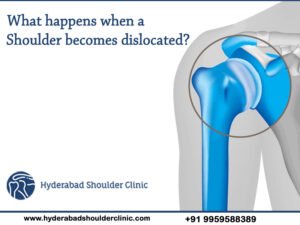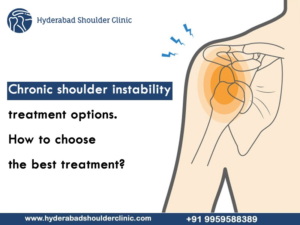Shoulder joint replacement is a beneficial surgical procedure to reduce pain and restores mobility in patients. One year after surgery, 95% of patients have the painless function, so they can do exercise with their shoulders well enough to improve strength and movement. Most shoulder replacement patients return to their preferred activities. It makes this procedure a precious choice for a large number of people who suffer shoulder pain due to loss of cartilage.
Full recovery after full shoulder replacement surgery requires patience, time and hard work. If you know what to expect after surgery, you will be more likely to recover quickly and correctly. People who have pain due to degenerative arthritis or who have injured their shoulders should get a shoulder replacement performed by a certified orthopaedic surgeon.
After surgery, painkillers and antibiotics are prescribed to relieve pain and prevent infection. Your arms can be attached to a sling or a cast to secure from movement. Doctors after surgery prescribe the rehabilitation program includes physiotherapy that starts immediately after surgery and is very important to strengthen and ensure shoulder mobility. You may be able to do mild daily activities two to six weeks after surgery.
This article provided by Dr Chandrasekhar gives the information about post-operative care to follow after the shoulder joint replacement for early recovery.
Before that, let us know about:
What Is Shoulder Replacement Surgery?

Shoulder joint replacement, called general shoulder arthroplasty, is a very successful procedure that helps to treat patients with severe pain and stiffness that often leads to the final stages of various forms of arthritis or degenerative diseases of the shoulder joint. The main benefit of shoulder replacement surgery is pain relief. Other benefits include restoring movement, strength and function to help patients reach the level of activity that is as close to normal as possible. Many patients return to their favourite sports such as tennis, golf and swimming and pursue personal health initiatives such as individual training, yoga and Pilates.
Information About What to Do After Surgery:
Here are some ways to improve healing and movement of the shoulder after you undergo shoulder replacement surgery. Discuss these techniques with your doctor and orthopaedic surgeon before trying them. A physiotherapist can modify some of these techniques depending on your situation (e.g. age, weight, and procedure). Follow only the methods recommended by your doctor.
How Long Patient Will Be In Hospital?
- Patients spend 1-2 nights in the hospital post-surgery.
- You are discharged from the hospital or allowed to go home when your pain is under control, and you can get up and go back to bed and walk without help.
- Going home: Ask someone to take you home after surgery, even if you take a taxi.
- Have someone to wash and clean your wound or surgical site before surgery.
Shower And Wound Care:

- If there is a thick outer dressing, you can take it off two days after the operation, but should not wet the incision site with water flowing until five days after surgery.
- The inner bandage may have dried blood, which is normal.
- Bandages will be removed for bathing five days after surgery if desired.
- If there are sterile stripes directly on the wound, keep until they fall on their own or until you see your surgeon.
- You can take a shower but do not scrub or spray water directly into the wound. Water splashes on the wound or runs down along with soap or shampoo, but do not apply it directly when bathing.
- When you leave the bathroom, wipe the wound lightly with a clean cloth or paper towel and let it dry properly.
- Then cover the incision (sterile tape or clips) with a bandage, which you can buy at the pharmacy. Before each shower bandage is removed and then a new bandage is placed.
Do not try to clean the wound again and do not put anything on it; this includes any type of antibiotic ointment or special cleaning solution or cream.
Exercise:

- Wear the sling as directed by the surgeon for the first 4 to 8 weeks after surgery.
- Remove the sling to do physical exercise 2-3 times a day.
- Gradually resume normal activities such as walking; Recovery is gradual, and it is normal for you to feel weak and tired within a few weeks after surgery
- You can start physiotherapy in one or two weeks.
- Your surgeon will prescribe a prescription for physiotherapy for physical therapy.
Physical therapy:
- Physical therapy starts two weeks after surgery. At this point, you might be able to begin releasing slings more often. You must always wear a sling on your shoulder to avoid injury. Weeks 4 -6 consist of exercises to increase range of movement. It can be annoying and frustrating, but it is essential to listen to an orthopaedic therapist and surgeon.
- Weeks 6-12 consist of strengthening exercises after the expected range of motion has reached. Remember that because of the mechanics and physics behind each replacement, you have limited freedom of movement. Please discuss these details with an orthopaedic surgeon for more information.
Medications For Pain Management:

- For the first or second day after surgery, it is better to take painkillers regularly, e.g. every 4-6 hours instead of waiting for the pain to worsen.
- Use painkillers as prescribed by your surgeon.
- Reduce painkillers when your pain subsides.
- Take antibiotics if required when prescribed by the doctor to avoid infections.
Sleeping:

- Many patients find that they cannot sleep in a normal position after surgery.
- Most patients feel comfortable sleeping more upright in the first few weeks after surgery.
- Sleeping in a recliner or making a nest of a pillow in bed is usually the most pleasant and feels comfortable.
Swelling:

- Expected to have swelling for a few weeks after surgery caused by fluid entering the joints during surgery or inflammation.
- Some swelling or bruising may go into the chest muscles or from hand to hand.
- Use an ice pack or use Cryotherapy to relieve pain and swelling.
- Apply ice 4-6 times a day for 10-15 minutes.
- Never apply ice directly to the skin.
Return to work:

- If you can get back to work, it depends on:
- The type of work you do and your physical requirements
- How much pain and swelling you should have after surgery
- How your physiotherapy develops
- Change jobs or work from home.
- Your surgeon will help you decide when to go back to work. Expect to take off at least 2 to 4 weeks for desk work that you can do manually in a sling.
- If it is a job that needs both hands to work, take around 3 to 4 months to take off.
- Heavy physical work takes about six months to leave.
Healthy Eating:

- Start with clear fluids after surgery.
- Gradually switch to a balanced diet, depending on your taste.
- At least try to drink six glasses of fluid a day.
- Changes in medication, activity and diet can cause constipation (hard and dry bowel movements).
- To avoid constipation: drink plenty of fluids, eat high-fibre foods such as plums, fruits, bran, seeds and vegetables, if necessary, a stool softener or laxative. Ask your surgeon to make suggestions.
Smoking:

- Smoking causes problems in healing bones, and tissues stop it shortly before surgery for two months, and after surgery for 3 to 6 months, the possibility of healing problems is reduced.
Driving:

- Do not drive while taking painkillers or with your hands in a sling.
- You can expect not to drive for at least 4-8 weeks after surgery.
- If you narcotics stop driving
Your Regular Medications:
- Resume your regular medications unless instructed by a surgeon
Follow Up Appointment:

- Approximately 10-14 days post-surgery a post-operative appointment should be scheduled.
- Call the doctor if you do not have an appointment scheduled and book your appointment
- Write down all your questions regarding the post-surgical care for the surgeon before the appointment
Reduce The Risk Of Infection Before Shoulder Replacement:

- Tell a doctor about a joint replacement before you perform dental surgery (including routine cleaning)Medical interventions such as treatment of the bladder, lungs, prostate or large intestine.
- You may be given antibiotics before the procedure.
Call your surgeon if you have:
- Increased pain or swelling that does not go away by elevation, ice and pain relievers
- Sores that are red, swollen, hot, or bleeding more than 72 hours after surgery
- The temperature is higher than 38.5 ° C
- Signs of circulatory problems (e.g. Coolness, discolouration, numbness) that do not relieve by rest
- Nausea and vomiting continuously
- Chest pain or difficulty breathing, which is unusual for you
- Inability to urinate for more than 8-10 hours.
Recovery time For Shoulder Replacement:

Usually, it takes eight weeks or more for the patient to recover. It takes several months for the patient to do hard work or do strenuous exercise. The usual recovery time limits are as follows:
- Patients can use their hands and wrist immediately after surgery.
- After about six weeks, the patient can use the entire arm, including the shoulder, for gentle activities.
- About eight weeks after surgery (in more cases), patients can begin to use the arms and shoulders fully and actively.
- About three months after surgery, most patients feel quite comfortable, moving about half normal, but note some weaknesses.
- After six months, most patients are pain-free (although they may experience pain under certain weather conditions) and have movements and strength of about two-thirds of normal.
- After one year, about 95% of shoulder replacement patients are pain-free, and the remaining 5% usually only experience time-related pain or unintentional pain due to excessive activity. Likewise, there is probably no significant limit on strength, depending on the condition of the deltoid and rotator cuffs, especially if both muscle groups are healthy before surgery.
Conclusion:
Every patient must follow the post-operative care after the shoulder joint replacement for early recovery without any surgical risk.
You must make a post-operative appointment about two weeks after surgery. If not, contact the hospital to make an appointment. Please arrive 30 minutes before your appointment to have enough time for an X-ray.
If you have further questions or concerns, please contact Dr Chandrasekar B. hospital for more information about the surgery and post-operative care. We will take all calls within 24 hours. You can reach our office at 9959588389.





